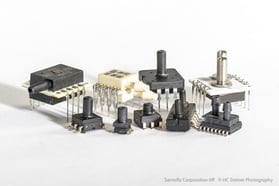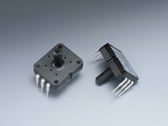When selecting a pressure sensor for a specific application, designers must first determine the total system accuracy required, as well as the performance requirements for the lifetime of the product.
Like a bathroom scale that is used day after day, a pressure sensor's output may vary over time. The amount of drift depends on the specification given by the manufacturer. Other factors, such as humidity and operating temperature range, can also affect the accuracy of a pressure sensor, regardless of which type of sensor you purchase.
In critical applications requiring optimal accuracy and minimal drift, designers will have to either calibrate or tweak the performance of the pressure sensor to meet the system accuracy requirements. Furthermore, some systems often require recalibration or resetting to zero to ensure optimal reliability after extended use. Back to our example, a good analogy is a mechanical scale, in which the zero point will drift over time and the user must adjust the zero point to maintain accurate weight measurements.

Precision Vs. Resolution
The overall reliability and accuracy of sensors depend on two main factors: precision and resolution. Optimal precision allows sensors to produce the same output for the same input, while optimal resolution allows sensors to reliably detect small changes within a measured parameter.
Noise can greatly affect precision, as measurement systems with a low signal-to-noise ratio will inevitably struggle to make repeatable measurements. Hysteresis, meanwhile, will cause sensors to read low with increasing signals and high with decreasing signals.
Like precision, optimal linearity is also critical for successful sensor operation, allowing output to be directly proportional to input. Similarly, speed plays a role as well, since sensors that produce precise readings at faster rates allow for smoother, quicker processes.
Ways to Calibrate Your Sensor
Sensor calibration can be done following a two-step process or a one-step process, in which one of the following actions is carried out:
- Calibration of the front-end analog circuit errors – This accounts for input offset, gain, and nonlinearity issues that are introduced in the signal from the sensing element before digitization. This step can be done by either the sensor manufacturer or by the customer. To decide who does this step depends on target performance and cost. This is the classic make or buy decision.
- Calibration of the back-end analog circuit errors — This accounts for errors in the signal that occur after being conditioned by the digital circuits and converted back to analog form. For example, a customer purchases a fully calibrated sensor with a 1.5% accuracy, then further refines the output with additional components to achieve 1% accuracy. Often this step is done by customers.
Sensor Choices
Three options are available when deciding what kind of pressure sensor to purchase.
 Calibrated, compensated, and amplified – These sensors come with a fully signal-conditioned output (voltage or digital) and are compensated for a wide temperature range and calibrated over a broad pressure range. These sensors provide the fastest time to market for the end design. Some can be used with a high-resolution A/D to allow further tweaking in the final product. A good product example is the AP4/AG4 pressure sensor with digital output.
Calibrated, compensated, and amplified – These sensors come with a fully signal-conditioned output (voltage or digital) and are compensated for a wide temperature range and calibrated over a broad pressure range. These sensors provide the fastest time to market for the end design. Some can be used with a high-resolution A/D to allow further tweaking in the final product. A good product example is the AP4/AG4 pressure sensor with digital output.- Calibrated, compensated, and unamplified – These sensors have an output signal that is not amplified (millivolt) but features built-in temperature compensation. Users can employ the unamplified signal to customize an output around system requirements, allowing the user to ignore portions of the calibration range that are not used in the end design or allow for wider tolerance. A good choice is AMS5612.
- Uncalibrated, uncompensated, and unamplified – This option is ideal for users focusing on trend over precision. Users can establish their own calibration process and can create their own auto-zero and single-point control functions (such as on/off). Product examples in this category are the FPN/FGN Series.
When selecting a sensor, some key considerations should be kept in mind, including:
- What capabilities are available in regard to electronics design?
- Are any environmental chambers or other specialty equipment needed?
- How is my bill of materials and product cost affected by my choice?
- Can the sensor manufacturer offer a modified solution to help me reach my goal?
Learn More
To learn more about pressure sensors and the various options available for your application, download Servoflo's comprehensive Pressure Sensor Selection Guide.


